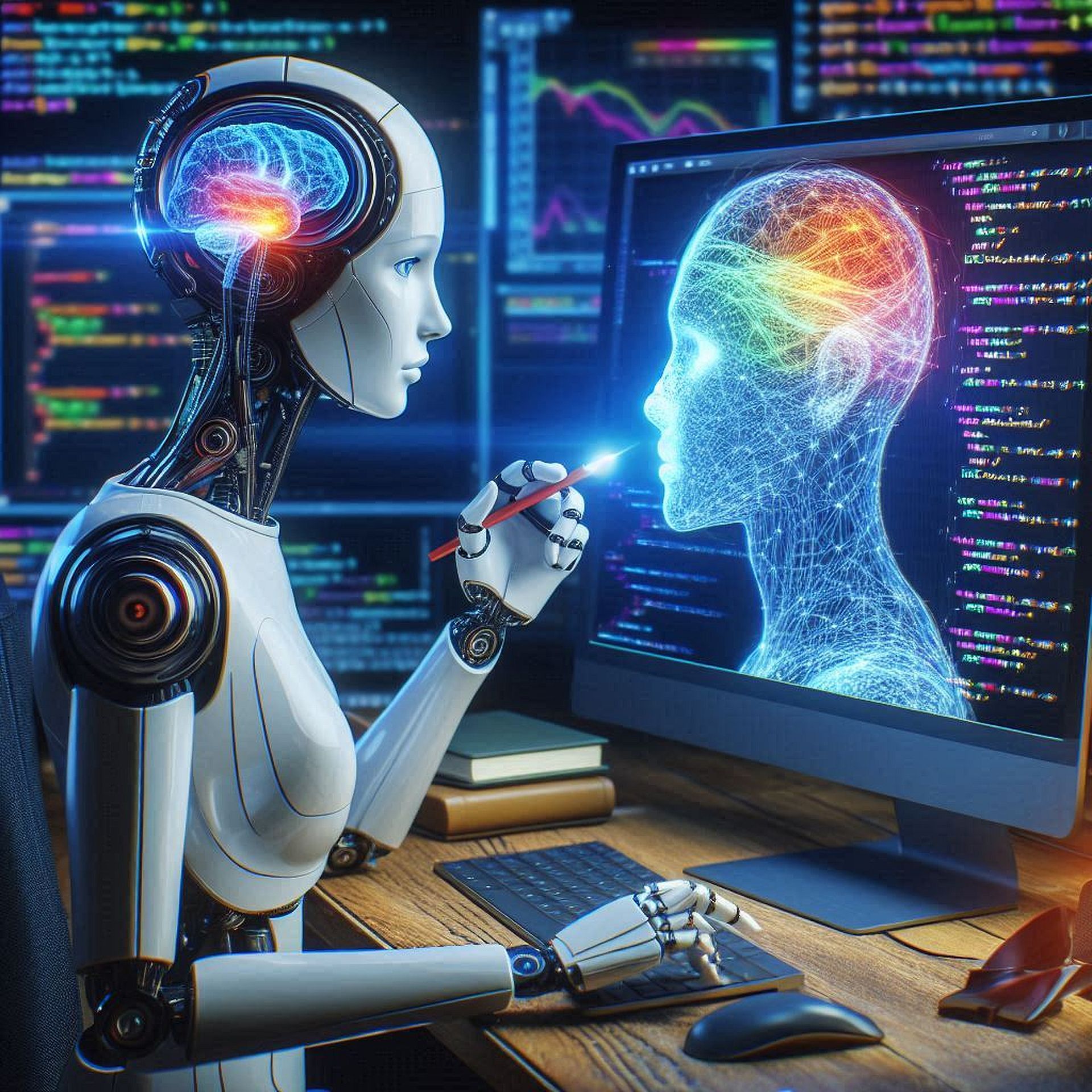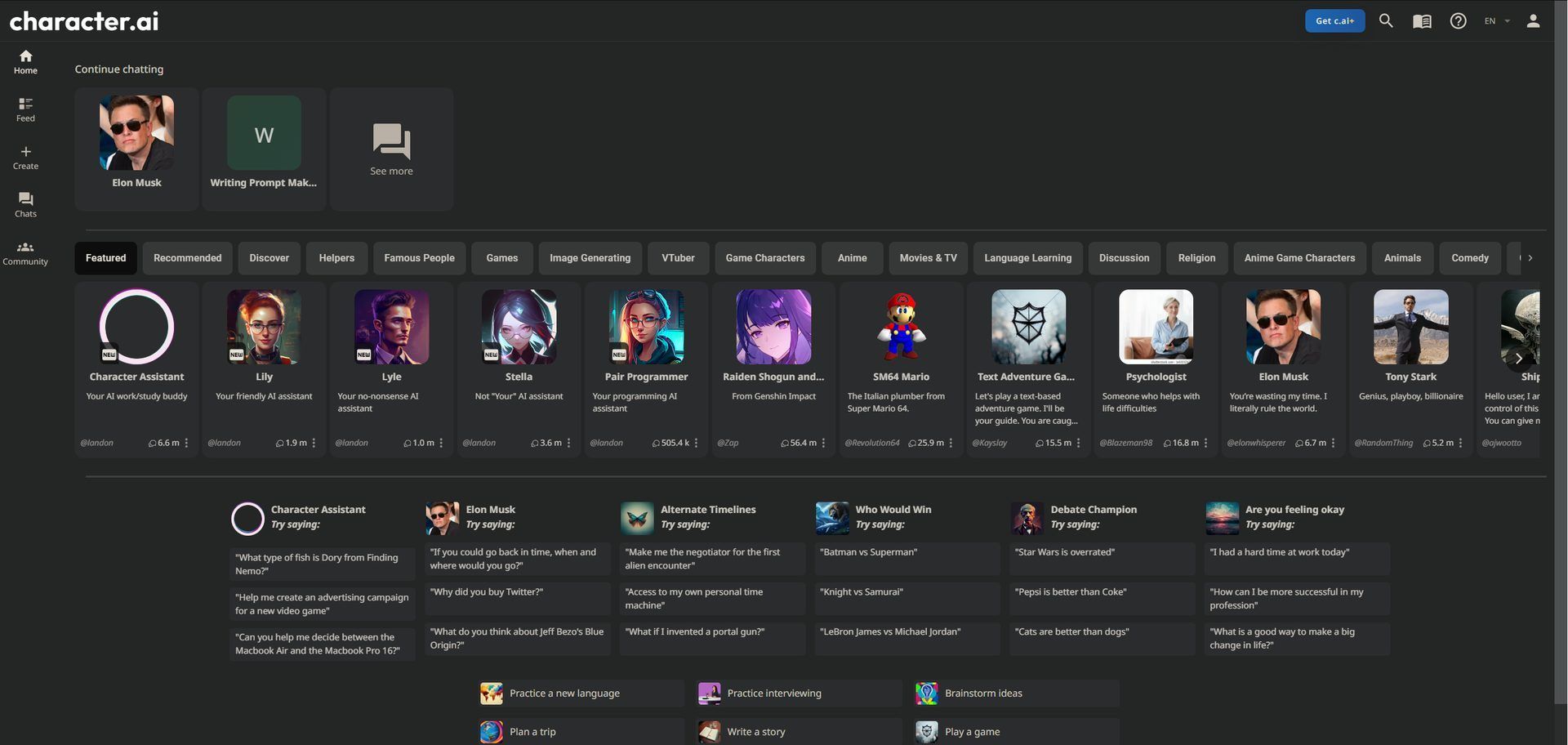What is the main goal of generative AI?

What is the main goal of generative AI? Let’s explore! It’s all about teaching computers to be creative like humans, generating text, images, and more on their own.
This article dives into generative AI: what it is, how it works, and where it’s used. We’ll explore how it’s transforming everything from art to healthcare, showing how it’s shaping the future of technology.
What is gen AI?Generative AI, often abbreviated as gen AI, refers to a subset of artificial intelligence focused on creating content that is original and resembles human-generated content. Unlike traditional AI systems that are task-oriented and operate within predefined rules, generative AI is designed to autonomously produce outputs such as text, images, audio, and even videos. Here are some of the key characteristics of generative AI:
- Creativity: Generative AI aims to mimic human creativity by generating new and original content. It can create realistic text, images, and other forms of media that are difficult to distinguish from those created by humans.
 Main goal of generative AI: Create original and creative content autonomously (Image credit)
Main goal of generative AI: Create original and creative content autonomously (Image credit)
- Learning from data: These AI systems learn patterns and features from vast amounts of data. They can generate content based on examples they have been trained on, enabling them to produce outputs that reflect the style and characteristics of the input data.
- Adaptability: Generative AI can adapt to different contexts and styles. For example, it can generate text in different languages or mimic different artistic styles in image generation.
- Complexity: Advanced generative AI models, such as Generative Adversarial Networks (GANs) and Transformers, are capable of handling complex tasks and generating high-quality outputs across various domains.
Generative AI models are typically based on neural networks, which are trained using large datasets. These models can generate outputs by either predicting the next sequence of data (like in text generation) or by generating entirely new content based on learned patterns and examples (like in image generation with GANs).
What is the main goal of generative AI?The main goal of generative AI is to create algorithms and systems capable of autonomously producing content that is indistinguishable from content created by humans. This includes generating text, images, audio, and even videos. Generative AI aims to mimic human creativity and problem-solving abilities, allowing machines to understand, learn from, and replicate complex patterns found in data.
At its core, generative AI seeks to push the boundaries of what machines can achieve in terms of creativity and innovation. It enables applications ranging from natural language processing (like chatbots and automated content generation) to art and design (creating paintings or music compositions) and even scientific discovery (such as drug discovery or materials science simulations).
Ultimately, the goal is not just to mimic human output but also to augment human capabilities, automate repetitive tasks, and provide new insights and solutions that may not be immediately apparent to humans. Generative AI holds promise across various industries, from entertainment and marketing to healthcare and finance, revolutionizing how we interact with technology and how businesses operate in the digital age.
Generative AI use casesGenerative AI, with its ability to create original and diverse content, finds applications across a wide range of fields. Here are some prominent use cases where generative AI is making an impact:
- Natural Language Generation (NLG): Generative AI can create human-like text based on input data, making it useful for:
- Content creation: Generating articles, product descriptions, and marketing copy, like ChatGPT does.
- Chatbots: Creating conversational agents capable of realistic dialogue, like Character AI.
 Main goal of generative AI: Mimic human-like creativity and problem-solving abilities
Main goal of generative AI: Mimic human-like creativity and problem-solving abilities
-
- Summarization: Generating concise summaries of long texts or documents.
- Art and creativity: Generative AI can produce artwork, music, and other creative outputs:
- Art generation: Creating paintings, drawings, and digital art. Midjourney is one of the most popular ones.
- Music composition: Generating melodies, harmonies, and entire musical compositions. Check out Suno AI and see what generative AI can do.
- Design and fashion: Creating new designs, patterns, and styles in fashion.
- Image and video generation: Generative AI can generate and manipulate visual content:
- Photorealistic images: Creating realistic images from textual descriptions or altering existing images. You can use Bing Image Creator as a starter, it’s free!
- Video synthesis: Generating videos, altering scenes, and adding visual effects is becoming easier with gen AI.
Car mirrors and sunsets pic.twitter.com/OOwor7VsWk
— 青龍聖者 (@bdsqlsz) June 6, 2024
- Healthcare: Generative AI has applications in medical imaging and personalized medicine:
- Medical image analysis: Assisting in the interpretation and analysis of medical images such as X-rays and MRIs.
- Drug discovery: Generating novel chemical compounds and predicting their properties. Do you know what the role of generative AI is in drug discovery? Check out our article and explore!
- Entertainment and gaming: Generative AI enhances interactive experiences and content creation in entertainment:
- Game development: Creating virtual environments, characters, and narratives. Leonardo AI is a really good example of it.
Two other simple tests of the new Texture Generation tool from @LeonardoAi_ pic.twitter.com/g3JVB4WJLu
— v4f4t4 (@v4f4t4) April 8, 2023
-
- Special effects: Generating visual effects for movies, animations, and virtual reality.
- Finance: Generative AI can analyze financial data and optimize decision-making processes:
- Financial modeling: Predicting market trends, analyzing risk, and optimizing investment strategies.
- Algorithmic trading: Developing trading algorithms based on market data and trends.
- Research and innovation: Generative AI aids in scientific research and innovation:
- Simulation and modeling: Generating simulations to study complex systems and phenomena.
- Data synthesis: Creating synthetic data for training AI models in scenarios where real data is limited or sensitive.
- Personalization and recommendation systems: Generative AI helps in providing personalized content and recommendations:
- Personalized content: Tailoring content based on user preferences and behavior.
- Recommendation engines: Generating recommendations for products, services, and content.
- Virtual assistants and human-machine interaction: Generative AI powers intelligent virtual assistants and enhances human-machine interaction:
- Virtual assistants: Providing natural and context-aware responses to user queries.
- Interactive systems: Creating interactive experiences in education, customer service, and training.
Generative AI continues to evolve rapidly, unlocking new possibilities in creativity, automation, and decision-making across industries. As research and development in AI advance, we can expect even more innovative applications and improvements in generative AI technologies.
Now you know the main goal of generative AI. For more, stay tuned!
Featured image credit: Eray Eliaçık/Bing
